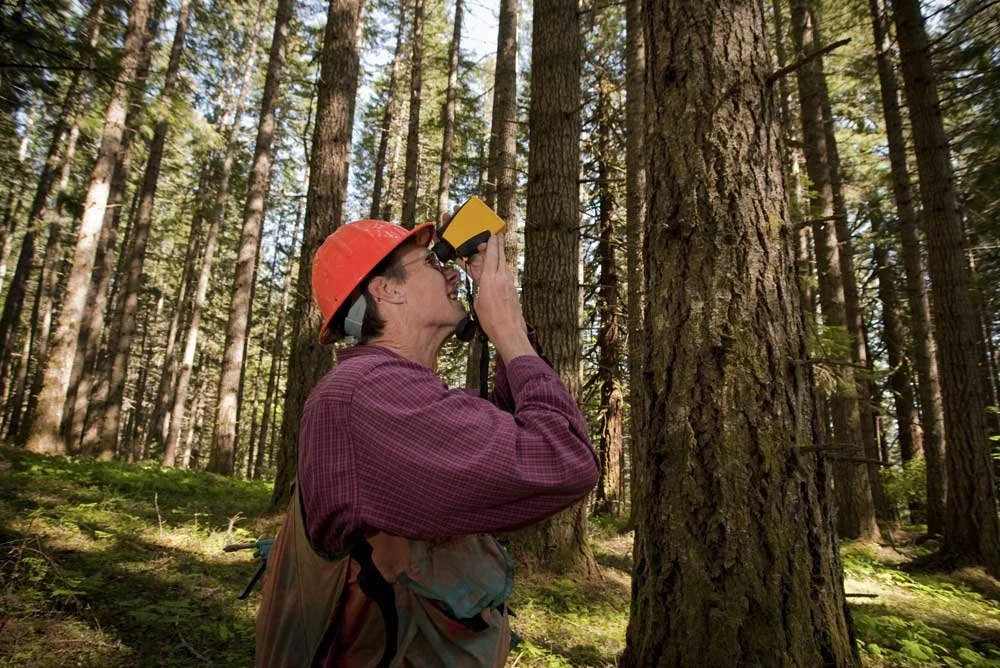How Green Jobs Invest in Our Planet
By Sammie Trvalik, Earth Forward Group
Published April 28, 2023. Updated April 30, 2024.
Green jobs are essential to mitigating the effects of and building resilience to climate change — and they’re growing rapidly. In this article, we explore 4 ways that green jobs “invest” in our planet.
The renewable energy transition is a crucial step in decarbonization - Image Source
Decarbonization
Decarbonization is the process of reducing the amount of carbon dioxide released into the atmosphere, achieved by decreasing reliance on carbon-emitting energy sources such as coal, natural gas, and petroleum (fossil fuels). The ultimate objective of decarbonization is to establish a carbon-neutral economy that promotes a healthy and stable environment.
To achieve decarbonization, it is crucial to prioritize addressing the power grid, transportation, buildings, and industry sectors, as they account for the majority of carbon emissions. An effective strategy to achieve this goal is to transition the power grid to depend on renewable energy technologies, and subsequently utilize this sustainable electricity to power other sectors.
Green jobs are a critical part of decarbonization efforts because a number of them are directly involved in developing and implementing environmentally sustainable practices and technologies. Green jobs include a range of occupations, such as renewable energy engineers and technicians, weatherization professionals, green builders, and many more.
These jobs are directly involved in the transition to a low-carbon economy. For instance, renewable energy engineers and technicians design, install, and maintain solar, wind, and hydropower systems, which generate clean energy and reduce reliance on fossil fuels. Weatherization professionals help homeowners and commercial businesses identify where they can improve energy efficiency and reduce carbon emissions. Green builders construct sustainable buildings that use less energy and produce fewer greenhouse gas emissions.
Green jobs not only invest in our planet by contributing to decarbonization efforts, but they also have the potential to stimulate economic growth and create new job opportunities in emerging industries.
Weatherization measures increase residential energy efficiency, such as installing proper insulation - Image Source
Energy Efficiency
Our built environment demands an immense amount of energy — an astonishing 4 trillion kilowatt hours annually, a figure that is difficult to fathom. However, energy efficiency offers a solution by reducing the amount of energy required to accomplish the same task. By implementing energy-efficient technologies, buildings can consume less energy to heat, cool, and power appliances and electronics. This not only lowers utility costs, but also helps reduce buildings’ carbon footprint.
Unfortunately, access to energy-efficient technologies is often limited, with some households disproportionately affected. Lower-income communities and communities of color often experience a much higher energy burden, meaning they must allocate a greater proportion of their monthly income towards energy bills. Due to a lack of access to energy-efficient solutions, some households are forced to use more energy to complete the same tasks, resulting in higher utility costs and increased carbon emissions into the atmosphere through no fault of their own.
The energy-efficiency industry plays a crucial role in combating climate change and as a result offers a multitude of employment opportunities. As building codes become stricter and increased funding is available for energy-saving technologies, demand for professionals skilled in home performance and weatherization is on the rise.
An energy auditor is a professional who assesses the energy use of an existing building, including examining the building’s lighting, heating, cooling, ventilation, insulation, and windows to identify potential areas of inefficiency. They then provide recommendations to home or business owners to reduce energy waste. Energy auditors typically work for government agencies, a utility company, or private weatherization companies, but can also operate independently.
Similarly, a green building consultant is a professional who advises homeowners and businesses on sustainable building design and construction practices. In addition to recommending upgrades to lighting and HVAC systems, these consultants specialize in providing guidance on sustainable building materials and construction techniques, and offer avenues for procuring renewable energy technologies. Green building consultants often work with architects, builders, homeowners and businesses to improve the overall energy-efficiency of newer homes and the construction process.
Green jobs are essential for promoting energy-efficiency and transitioning to a more sustainable and equitable economy. They provide an opportunity to create good-paying jobs while protecting the environment and addressing the urgent challenge of climate change.
The Environmental Justice movement has gained popularity since the 1980s - Image Source
environmental justice and climate resiliency
The Environmental Justice movement, which began in the early 1980s, recognizes the right of all people to a healthy environment regardless of their demographic characteristics. This involves a fair distribution of environmental benefits and burdens, and the right to self-determination in local environments. Under-resourced communities that contribute the least to climate change will experience its earliest and most severe impacts. Hence, it is imperative that these communities are prioritized both as climate change advances and among the transition to a more sustainable future.
Green workforce development initiatives aim to train both the current and future workforce for employment opportunities in sustainability-related industries. These programs also facilitate the reskilling or upskilling of workers employed in industries prone to job loss, such as fossil fuels, as environmental regulations inevitably tighten. This enables them to transition towards rapidly growing green jobs, such as those in energy efficiency, renewables, and weatherization.
As such, green jobs are often accessible by nature. There are several job-preparation options for those interested in the sustainability field, such as skills training programs and paid apprenticeship. Many of these jobs don’t require a college degree, the cost of which can be a significant barrier in attaining other high-paying jobs. The skills involved in other fields such as construction, manufacturing, general sciences, computing, or teaching, are highly transferable to a number of green jobs.
Several green jobs are directly involved in mitigating the effects of climate change and building community resilience in environmental justice neighborhoods. From political advocates and campaigners that fight to strengthen regulations to protect communities from environmental hazards, to industry workers who perform site-cleanups, design and construct green buildings and infrastructure, or producers who provide nutritious, resource-sensitive food products, green workers are uniquely positioned to uplift their own communities.
Natural resource management jobs, such as foresters, contribute to resource conservation - Image Source
resource conservation
Our planet contains an abundance of valuable natural resources, such as land, water, and trees. Landscapes are made up of rich soils that help us grow nutrient dense foods, fresh water sources supply our drinking and irrigation water, and trees convert carbon dioxide into fresh oxygenated air and are the source of the lumber used in our built environment.
When natural resources are used unsustainably, we risk disturbing the fragile balance of nature and causing irreparable damage to the planet’s ecosystems on which the human (and animal) population depends.
To ensure the longevity of future generations while maintaining a healthy and productive planet, we must prioritize “greening” the industries that are involved directly and indirectly in natural resource management. These jobs have recently grown, in part thanks to the recent increase in federal funds available for sustainable development projects such as the Bipartisan Infrastructure Law.
Some green jobs contribute directly to natural resource management, such as the foresters that manage forested land use to ensure the longevity of ecosystems, the wildlife biologists that study and protect the planet’s various animal species and their habitats, or the sustainable food producers that implement sustainable farming practices to reduce natural resource use and maintain a healthy local environment. Most of these jobs require a 2 or 4-year college degree in fields such as environmental science, biology or forestry.
Many green jobs are indirectly involved in resource conservation, some of which offer training alternatives to the traditional college route.
By its nature, renewable energy minimizes land and water use and waste generation in the process of energy production. These fields employ thousands of tradespeople including installers, repairmen, linemen, and more. Wind turbine technicians (or windtechs) and solar panel installers are among the most rapidly growing jobs in the green industry.
Green builders, home performance professionals, and energy efficiency consultants work to reduce the amount of energy and resources a building uses through retrofits or planning in new construction. Green builders might help find alternatives to lumber sourced from endangered tree species, home performance professionals may make recommendations to replace a fossil-fuel burning energy source with a cleaner alternative, and energy-efficiency consultants can identify areas of the home that waste energy to reduce overall energy consumption.
Whether directly or indirectly, various green jobs contribute to the conservation of valuable natural resources and help maintain a healthy human-nature relationship.
EFG’s Job Opportunities in Energy series
Office of Energy Efficiency & Renewable Energy: Map a Career in Green Energy
Interested in “green” certifications and technical training? Contact info@earthforwardgroup.com today.




